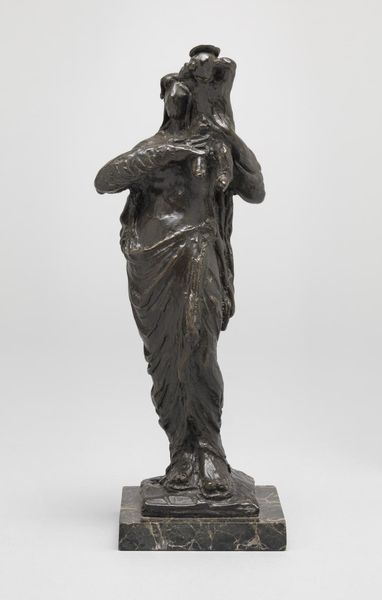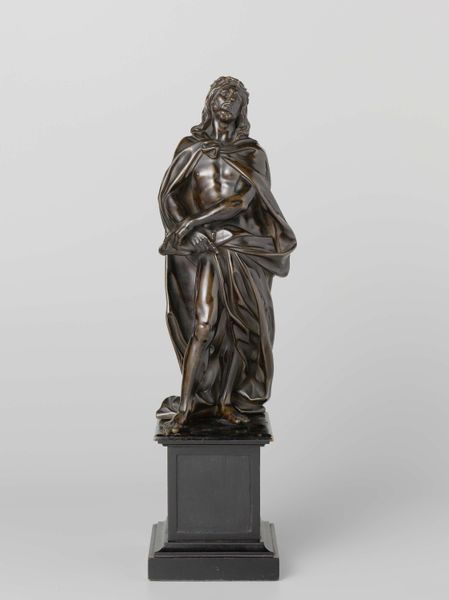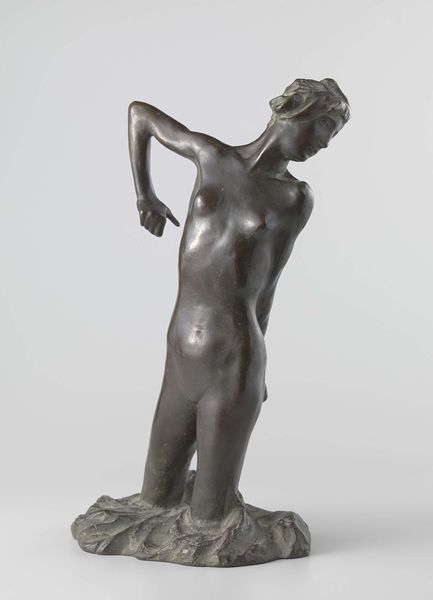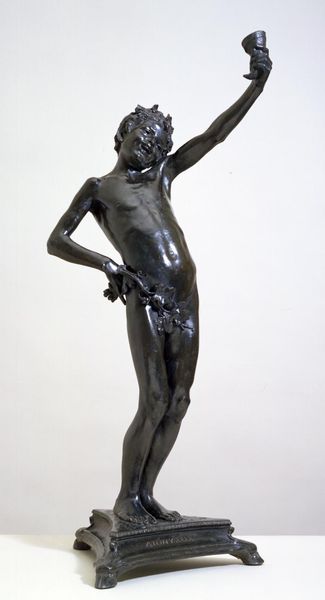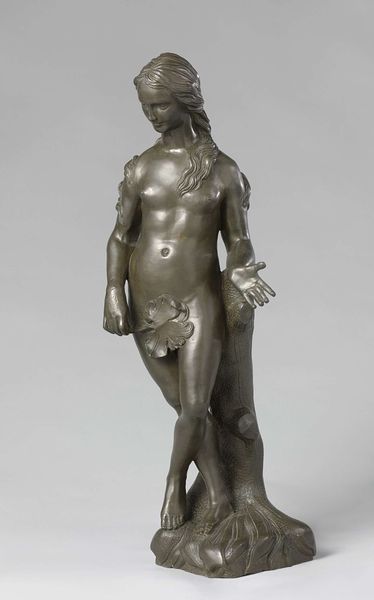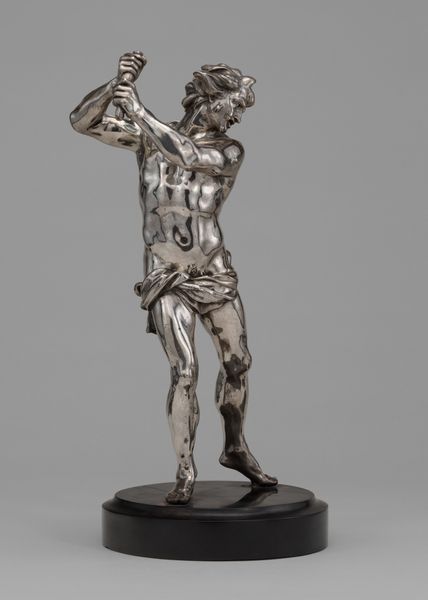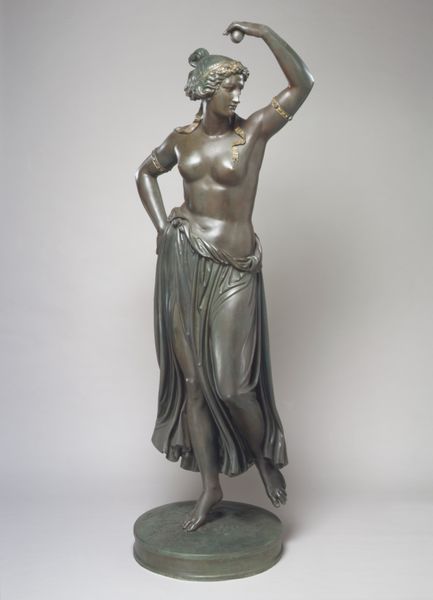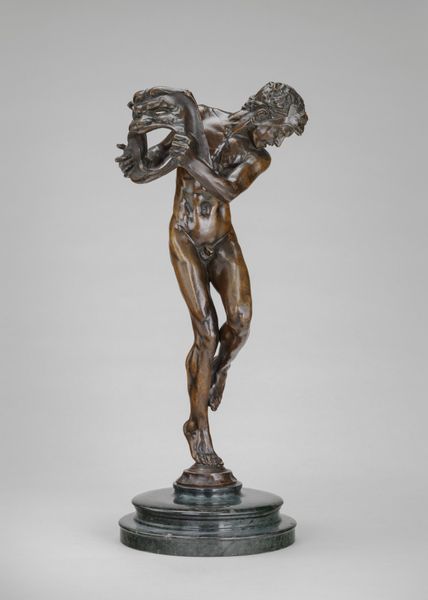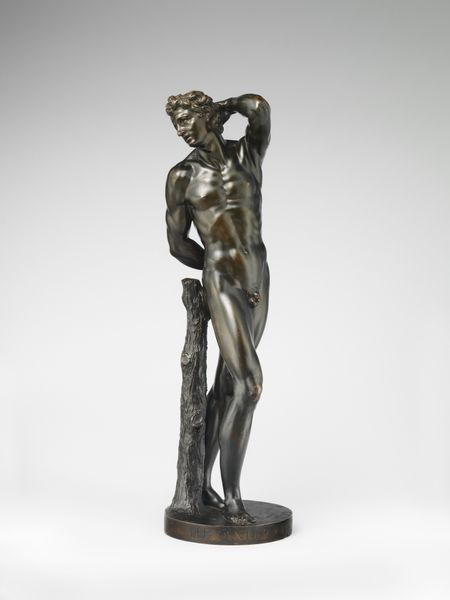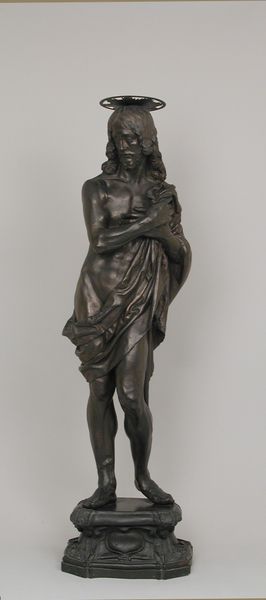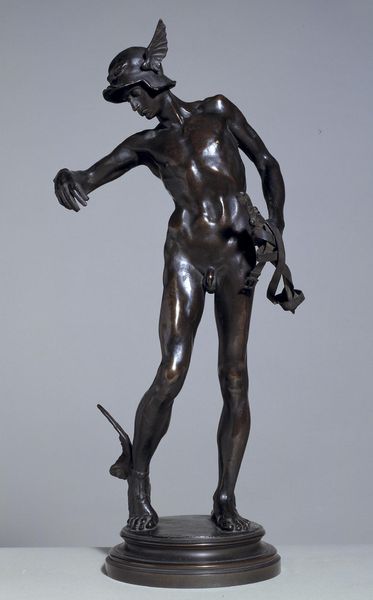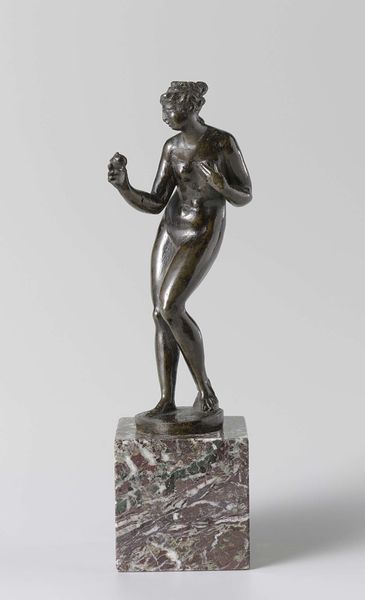
silver, sculpture
#
portrait
#
silver
#
baroque
#
sculpture
#
figuration
#
sculpture
#
decorative-art
#
christ
Dimensions: With base: 8 3/4 × 12 1/2 in. (22.2 × 31.8 cm)
Copyright: Public Domain
Editor: We’re looking at "Christ at the Column" by Alessandro Algardi, crafted sometime between 1630 and 1665. It's a silver sculpture and… I’m immediately struck by the quiet suffering it conveys. The figure seems so isolated. What narratives do you think Algardi is trying to create with this piece? Curator: It's fascinating how Algardi uses the Baroque style to depict Christ not in triumph, but in a moment of intense vulnerability. Think about the sociopolitical context – the Counter-Reformation. The Church was keen to reassert its authority, but artists were also exploring the human dimensions of religious figures. How does the use of silver, a precious material, complicate your understanding of this suffering? Editor: I suppose it elevates the suffering, gives it more significance. Like he’s not just any man, but something sacred being unjustly treated. But it almost feels contradictory to depict that level of anguish with such a valuable material. Curator: Exactly. It's a paradox, isn't it? Power and powerlessness, divinity and humanity. Consider, too, the male gaze inherent in the art historical canon, and how Christ's suffering body has been presented, and arguably sexualized. How might contemporary queer theory help us unpack this tension between the idealized form and the explicit depiction of pain? Editor: I never thought of it that way! Thinking about the male gaze on Christ's figure definitely opens up a new dimension. Curator: It invites a crucial interrogation of the history of religious iconography and the power dynamics embedded within. This isn't just a devotional object; it's a complex intersection of faith, power, and representation. Editor: So, it makes me reconsider everything, because I initially viewed the suffering very simplistically, without really exploring all the potential angles behind the composition and its significance. Curator: And that’s precisely why engaging with art through diverse critical lenses is so important. There’s always more to uncover.
Comments
No comments
Be the first to comment and join the conversation on the ultimate creative platform.
